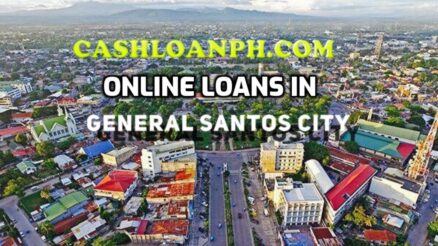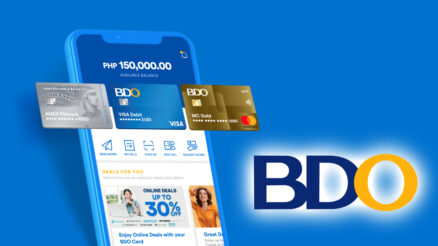Peer-to-peer lending in the Philippines has emerged as a transformative force in the financial landscape, providing a credible alternative for both borrowers and investors in a realm traditionally dominated by banks. This article aims to undertake a detailed exploration of the dynamics of peer-to-peer lending in the Philippines, examining its legitimacy, operational nuances, advantages, and drawbacks.
Understanding Peer-to-Peer Lending
What is Peer to Peer Lending (P2P)?
Peer-to-peer lending, often colloquially referred to as P2P or crowd lending, represents a paradigm shift in money lending. It operates as an online platform connecting individual borrowers and businesses directly with lenders, eliminating the need for a traditional financial intermediary. This system primarily offers unsecured loans, allowing lenders to earn higher interest rates while facilitating quicker and easier loans for borrowers.
Operational Process
For P2P Borrowers
For individuals seeking a swift financial solution without enduring the protracted processes associated with traditional banks, P2P lending platforms offer a streamlined online application process. While a pre-qualification screening is still part of the process, it is notably less rigorous than traditional banking standards. Once the application is submitted, the platform assesses creditworthiness, determining the borrower’s compatibility with the investment needs of potential lenders. Upon approval, investors fund the loan, providing borrowers with various options for receiving the loan proceeds, each accompanied by specific interest rates and repayment periods.
For P2P Lenders
Individuals interested in venturing into P2P lending as investors are not required to have substantial capital. With an entry investment as low as ₱5,000, prospective lenders can participate. The first step involves selecting a suitable P2P lending platform and completing the registration process, which typically includes specifying the investment amount, duration, and desired interest rates. Once registered, lenders fund their accounts and gain access to loan applications from borrowers. The investor can then choose which loans to finance, with the platform handling administrative tasks such as loan disbursement and payment collection, streamlining the investment process.
Pros and Cons of Peer-to-Peer Lending for Borrowers
Advantages
Fast and Convenient
The online nature of P2P lending facilitates a swift application process, providing borrowers with prompt feedback—an invaluable feature for those urgently in need of financial assistance.
No Hard Credit Checks
While credit checks remain a part of the approval process, P2P lending platforms generally adopt a more lenient approach compared to traditional banks, making loan approval possible even with higher interest rates.
No Collateral Required
The unsecured nature of P2P loans alleviates concerns related to collateral, eliminating the need to tie personal properties to the loan and reducing the risk of losing assets in case of payment default.
Disadvantages
Additional Fees
Beyond interest rates, borrowers may encounter additional fees associated with platform usage. Vigilance is necessary to assess the magnitude of these fees before opting for a specific platform’s services.
Higher Interest Rates
Depending on the borrower’s credit assessment, P2P lending platforms may impose higher interest rates. Individuals with lower credit ratings might find themselves burdened by elevated fees, potentially leading to a snowball effect over time.
Limited Availability
While P2P lending is gaining traction, it remains less popular compared to traditional bank loans, limiting its accessibility for a significant portion of borrowers.
Pros and Cons of Peer-to-Peer Lending for Investors
Advantages
Higher Rates of Return
One of the primary attractions for investors is the potential for higher returns. Platforms like Blend.PH offer returns of up to 30%, contingent upon the investment amount and duration.
Portfolio Control
Investors enjoy a considerable degree of control over their investments on P2P lending platforms. They can selectively fund loans based on specific criteria such as loan term, amount, or credit score range, allowing for portfolio customization.
Additional Passive Income Stream
Unlike traditional savings accounts or time deposits, funds invested in P2P lending platforms generate higher returns in a shorter timeframe. Monthly payouts from these investments can be harnessed to create a consistent source of passive income.
Disadvantages
Borrower Risk
The risk of default is inherently higher in P2P lending, as a substantial portion of borrowers may have limited or poor credit histories. Additionally, the absence of collateral for unsecured loans leaves investors with limited recourse in case of non-payment.
Not a Liquid Investment
Unlike more liquid investment options, P2P lending requires investors to wait until the borrower has fully repaid the loan before withdrawing their investment. This characteristic positions P2P lending as a long-term investment.
Economic Downturn Risks
During economic downturns, P2P lending platforms may experience liquidity challenges as a surge in investor withdrawals coincides with widespread loan defaults. This confluence of factors can diminish returns and, in extreme cases, lead to the loss of the investor’s principal.
Peer-to-Peer Lending Companies in the Philippines
#1. Blend.PH
Managed by Inclusive Financial Technologies and founded in 2016, Blend.PH is a P2P lending pioneer in the Philippines. It connects lenders seeking investment growth with borrowers aiming to fulfill their financial goals.
Blend.PH Loan Features:
- Minimum investment: ₱5,000
- Interest: 6% to 30% per annum
Fast Loan:
- ₱10,000 to ₱40,000
- Interest rate: 8% per month
- Payment terms: Three to six months
Personal Loan:
- ₱50,000 to ₱2,000,000
- Interest rate: Depending on risk type
Seafarer Loan:
- ₱50,000 to ₱500,000
- Interest rate: 3.5% per month
Franchise Loan:
- ₱50,000 to ₱2 million
- Interest rate: 2% per month
- Payment terms: 12 to 36 months
Salary Loan:
- Equivalent to one-month salary
- Interest rate: 3% per month
- Payment terms: One to six months
How to Apply for a Blend.PH Loan:
- Create a Blend.PH account and submit required information.
- Submit necessary documents for evaluation and verification.
- Once approved, loans are auctioned within Blend.PH for funding.
- Upon full funding, borrowers receive loan proceeds.
How to Invest Through Blend.PH:
- Create a Blend.PH lender account.
- Fund your wallet by depositing into the designated bank account.
- Upload the bank transfer screenshot or deposit slip.
- Verify and approve the transaction, with the deposit reflected in your Blend Wallet.
#2. Kiva Philippines
An international nonprofit founded in San Francisco, Kiva aims to provide financial access to underserved communities. In the Philippines, Kiva enables users to fund loans for as little as US$5, collaborating with other investors to reach the total loan amount.
How to Apply for a Kiva Loan:
- Apply through a Kiva Field Partner or directly on the Kiva website.
- Loans undergo underwriting and approval processes.
- For Kiva Field Partner loans, proceeds are pre-disbursed, while Kiva website loans undergo a fundraising period before disbursement.
How to Invest Through Kiva:
- Sign up for an account on the website.
- Visit https://www.kiva.org/lend-by-category.
- Choose a loan to invest in and proceed to checkout.
- Follow the prompts accordingly.
- After loan repayment, use repayments for new loans, donations, or withdrawals.
#3. Vidalia Lending
A Manila-based P2P lending platform, Vidalia Lending, offers personal, salary, and small business loans. Investors typically earn between 1% to 1.50% per month, safeguarding their capital with direct deposits of monthly or quarterly earnings.
Vidalia Loan Features:
- Minimum loan amount: ₱5,000 (personal loan) / ₱500,000 (business loan)
- Repayment period: Three up to 12 months
- Interest rate: 4% to 6%
- Payment terms: Daily, weekly, semi-monthly, monthly
How to Apply for a Vidalia Loan:
- Visit Vidalia’s official website and click Borrow.
- Submit the application for credit evaluation.
- Receive a response within 24 hours if qualified.
How to Invest Through Vidalia:
- Open an account online and transfer a minimum of ₱5,000.
- Receive email confirmation upon successful activation.
- Fund loans and receive capital and earnings on the loan maturity date.
#4. SeedIn
Launched in 2014, SeedIn stands as Southeast Asia’s largest business financing platform. It connects local businesses in need of short-term financing with individuals or companies seeking short-term investments. Since inception, SeedIn has facilitated almost ₱10 billion in funds.
SeedIn Features for Investors:
- Short tenure of one to 12 months
- Annualized returns from 7%
- Monthly interest rate payout
SeedIn Features for Borrowers:
- Fast approval in just seven days
- Approval based on a business’s growth potential
- Flexible financing options
- Fixed interest rate, no hidden fees
- Over US$260 million funded businesses
How to Apply for a SeedIn Loan:
- Check eligibility by filling out the online application form.
- A SeedIn representative will contact for further discussions.
- Eligibility verification is followed by loan amount confirmation.
- Sign documentation to receive funds in the nominated account.
How to Invest Through SeedIn:
- Download the SeedIn mobile app from the Apple App Store or Google Play Store.
- Sign up as a SeedIn investor, providing necessary information and documents.
- Fund your SeedIn account via online banking or e-wallet.
- Invest a minimum of ₱1,000 in a chosen project.
- After successful investment, funds are held until the project completes the subscription stage.
- Upon project closure, monthly payouts are received according to payment terms.
Frequently Asked Questions
Safety of P2P Lending?
Any investment inherently carries risks, including P2P lending. However, by meticulously selecting reputable P2P lending platforms and comprehending the associated risks, investors can engage in P2P lending relatively safely.
P2P Lending as an Investment?
P2P lending is a compelling investment option, particularly due to its competitive returns. During economic downturns, investors may opt to limit their exposure to P2P platforms to mitigate risk.
Earning Money with P2P Lending?
P2P lending provides an excellent avenue for earning passive income, requiring minimal investments starting from ₱5,000. With an average interest of 2% per month or 24% per year, it stands as an attractive option for income generation.
FundKo’s Status as a P2P Lender?
FundKo is indeed a P2P lender; however, regulatory issues have surfaced, with the Securities and Exchange Commission citing unauthorized lending activities and online solicitation of investments from the public.
Conclusion
The burgeoning realm of peer-to-peer lending in the Philippines offers a spectrum of opportunities for both borrowers and investors. As this financial ecosystem gains prominence, it is imperative for prospective participants to approach it with due diligence and a comprehensive understanding of its intricacies. For potential investors, the allure of high returns must be tempered with an acknowledgment of the associated risks, especially during economic downturns. Similarly, borrowers should weigh the advantages of swift and flexible loans against potential drawbacks such as higher interest rates and platform fees.
Whether venturing into P2P lending as an investor or borrower, a cautious and informed approach is paramount. While the potential benefits are significant, a nuanced understanding of the risks and a commitment to due diligence will be the key to a successful and sustainable engagement with the evolving landscape of peer-to-peer lending in the Philippines.
Explore the loan choices available to you and conveniently submit your application online via CashLoanPH:
In the meantime, if you require larger loan amounts to finance substantial expenditures, it might be prudent to explore the option of a personal loan. You can evaluate your choices and submit your application via CashLoanPH.com:
| Loan Provider | Loan Amount Range | Monthly Add-on Rate | Minimum Annual Income | Approval Time |
|---|---|---|---|---|
| Tala Loan | ₱1,000 - ₱15,000 | 15% | None | 24 hours |
| Tonik Quick Loan | ₱5,000 - ₱50,000 | Starts at 4.26% | ₱180,000 | As fast as 1 hour |
| RFC Loan | ₱10,000 - ₱150,000 | 4% | ₱120,000 | As fast as 24 hours |
| UNO Digital Bank Personal Loan | ₱10,000 - ₱200,000 | 1.79% | ₱180,000 | 1-2 days |
| HSBC Personal Loan | ₱30,000 - ₱500,000 | 0.65% | ₱168,000 | 5 to 7 banking days |
| CTBC Bank Personal Loan | ₱500,000 - ₱2 million | 1.39% to 1.79% | ₱180,000 | 1 to 5 banking days |
| PSBank Personal Loan | ₱20,000 - ₱250,000 | 1.75% or 2.5% | ₱180,000 | 5 to 9 banking days |
| UnionBank Personal Loan | ₱20,000 - ₱2 million | 1.29% | ₱250,000 | 24 hours |
| CIMB Personal Loan | ₱30,000 - ₱1 million | 1.95% | ₱180,000 | As fast as 24 hours |
| Tonik Flex Loan | ₱20,000 - ₱250,000 | Starts at 1.7% | ₱180,000 | 1 banking day |
| Tonik Big Loan | ₱250,000 - ₱5 million | 0.5825% | None | 7 days |
| SB Finance Personal Loan | ₱30,000 - ₱2 million | 2% | ₱180,000 | 5 banking days |
| Maybank Personal Loan | ₱50,000 - ₱1 million | 1.3% | ₱300,000 | 5 to 10 banking days |
| RCBC Bank Personal Loan | ₱50,000 - ₱1 million | 1.3% | ₱360,000 | 5 to 7 banking days |
| BPI Personal Loan | ₱20,000 - ₱2 million | 1.2% | ₱300,000 | 5 to 7 banking days |
| Metrobank Personal Loan | ₱20,000 - ₱1 million | 1.25% to 1.75% | ₱350,000 | 7 days |
| Tonik Quick Loan | ₱5,000 - ₱50,000 | Starts at 4.26% | ₱180,000 | As fast as 1 hour |




